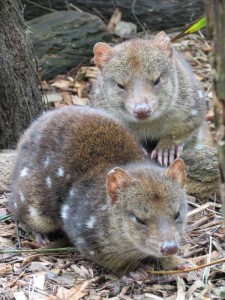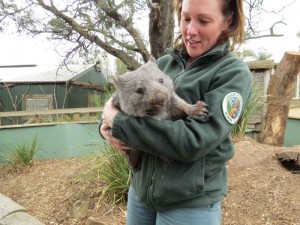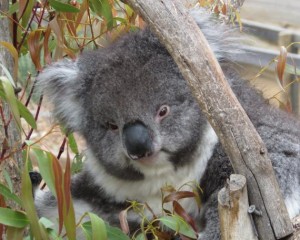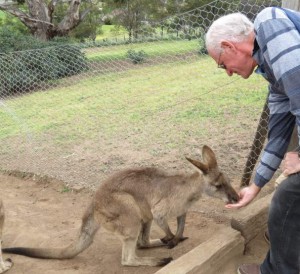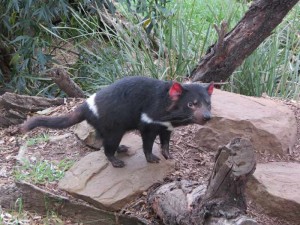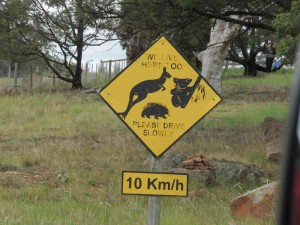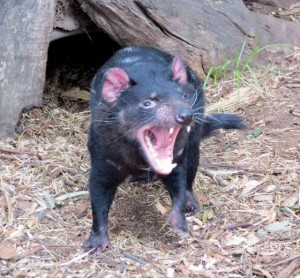Bloomin' Tasmania
/ It's a great time of year to be in Tasmania. Everything is blooming. There's even a free guide I picked up that provides a list and location of all of Tasmania's gardens (60 or more) … from formal, heritage gardens to native, wild bush landscapes … and the peak blooming times for each flower. Tasmania's cool, moist climate offers an ideal growing environment and gardens thrive. We certainly won't have the opportunity to visit them all, but the Royal Tasmanian Botanical Gardens (RTBG) were on my list of places to see.
David can be very crafty. So this morning when he said “How about going to the Botanical Gardens today? I've already reserved the courtesy van”, I was immediately suspicious.
It's a great time of year to be in Tasmania. Everything is blooming. There's even a free guide I picked up that provides a list and location of all of Tasmania's gardens (60 or more) … from formal, heritage gardens to native, wild bush landscapes … and the peak blooming times for each flower. Tasmania's cool, moist climate offers an ideal growing environment and gardens thrive. We certainly won't have the opportunity to visit them all, but the Royal Tasmanian Botanical Gardens (RTBG) were on my list of places to see.
David can be very crafty. So this morning when he said “How about going to the Botanical Gardens today? I've already reserved the courtesy van”, I was immediately suspicious.
“Sure”, I said.
“It's right on the way to Bunnings (a la Home Depot) and ENZED for more hydraulic fittings” he responded without so much as a sneaky grin.
Ah, well, a good compromise and off we went.
It was cold, raw and windy as we trudged from the parking lot to the gardens entrance. The sweet smells of blossoming flowers were everywhere. Rainbow lorikeets flitted from tree to tree on the beautifully landscaped grounds. Despite the gray skies and cold temperatures, the gardens were absolutely lovely. Located high on the Queens Domain, a grassy, woodland area, the RTBG venue was used centuries ago by Aboriginal tribes, their oyster shell middens still observable. Convicts worked here in the early 19th century, their handiwork evident in historic sandstone walls and buildings still standing within the garden grounds.
 As Australia's second oldest botanical gardens (Sydney's first), the RTBG were established along the Derwent River in 1818 and encompass over 35 acres. In addition to the more typical botanical garden offerings, the gardens maintain a large Tasmanian flora collection including native orchids and warantah, a type of protea, and the world's only Subantarctic Plant House.
As Australia's second oldest botanical gardens (Sydney's first), the RTBG were established along the Derwent River in 1818 and encompass over 35 acres. In addition to the more typical botanical garden offerings, the gardens maintain a large Tasmanian flora collection including native orchids and warantah, a type of protea, and the world's only Subantarctic Plant House.
We wandered past what is thought to be the world's second oldest steam-driven carousel in existence. The Gallopers Carousel, originally built in England in 1882, has been lovingly restored and after a stint on the Hobart waterfront, it sits regally in the gardens near the Conservatory. Some people enjoy the thrill of roller coasters. Me, I'll take an elaborately painted horse on a carousel every time. Alas, it wasn't running.
The tulips are in bloom and I don't think we've ever seen such huge ones. They were magnificent. We wandered through a hall of orchids. I always thought they required a hot, steamy environment, but they most assuredly do not as the unheated Conservatory housed thousands of gorgeous, exotic flowers. We passed a lily pond, but no lilies bloomed yet. The ducks and one solitary cormorant didn't seem to mind. The rhododendron flowers along the path were so profuse, the plants could not have accommodated even one more blossom. Hot pinks, nail polish reds, vibrant oranges, even submarine yellow...huge blossoms, some the size of your fist. We could have wandered for hours if the cold didn't finally get to us.
It's early in the season and not everything we wanted to see was in bloom AND the carousel was not operating. So I've obtained a raincheck from the captain for a return visit which I'm sure he'll honor ... the next time he needs to go to Bunnings.



